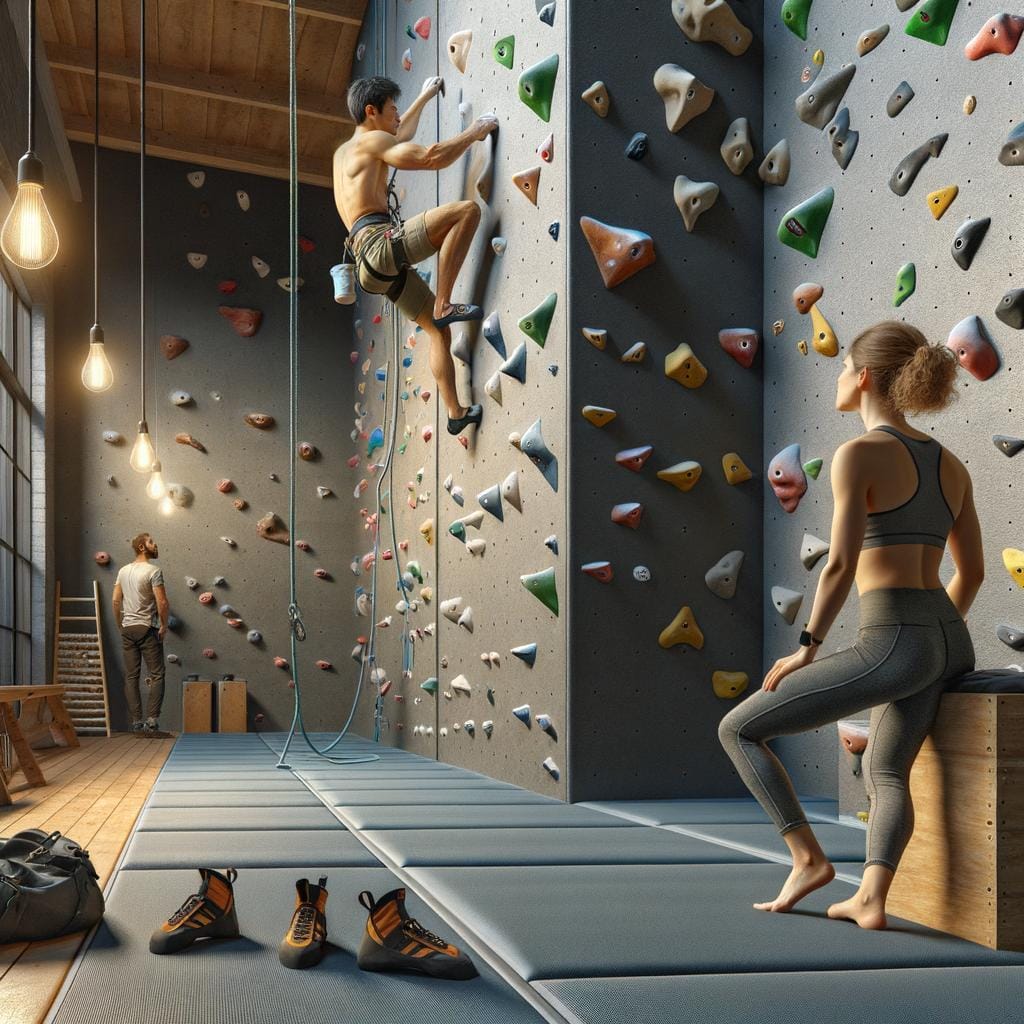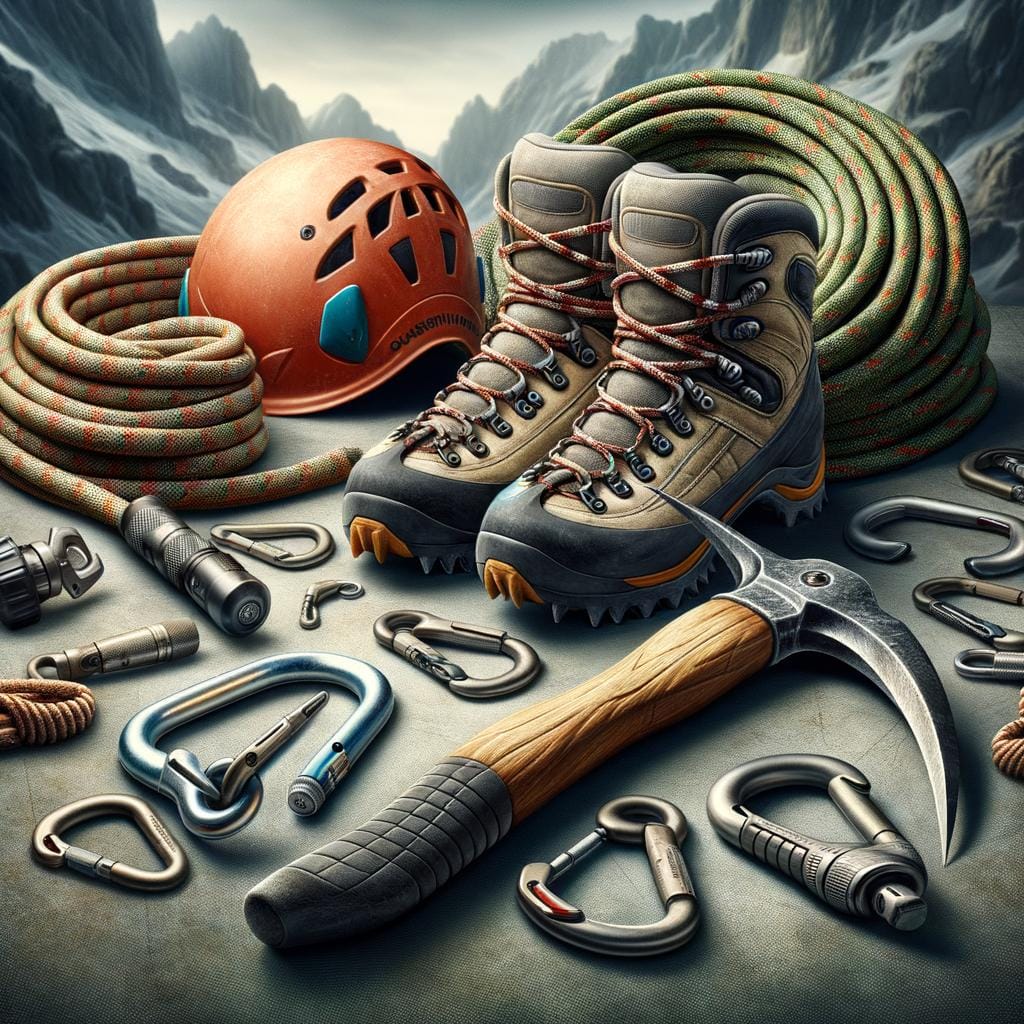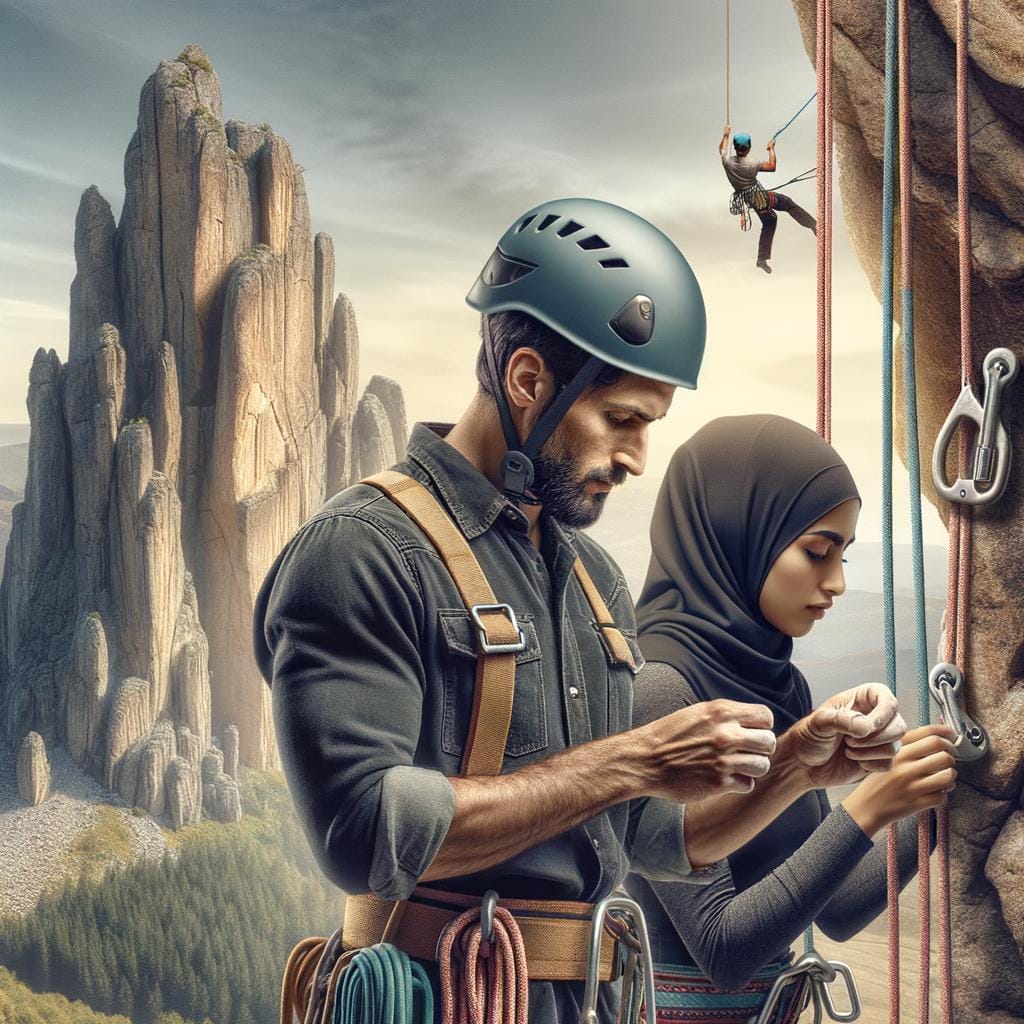Indoor climbing has become a sensation in the world of fitness and adventure sports, captivating enthusiasts of all ages. As people seek thrilling experiences in a controlled environment, indoor climbing facilities offer the perfect solution. Whether you are a seasoned climber or a beginner looking to try something new, indoor climbing gyms provide an exciting challenge for all skill levels.
The rise of indoor climbing’s popularity can be attributed to the accessibility and safety it offers compared to traditional outdoor rock climbing. With climate-controlled environments and expertly designed walls, climbers can hone their skills regardless of weather conditions or experience level. Additionally, the social aspect of indoor climbing fosters a sense of community among participants, creating a supportive and encouraging atmosphere.
Not only does indoor climbing provide an adrenaline rush and an enjoyable way to stay active, but it also offers numerous physical and mental benefits. From improving strength and flexibility to enhancing problem-solving skills and focus, engaging in indoor climbing activities yields a holistic approach to well-being. In the following sections, we will delve deeper into the benefits, equipment needed, techniques, safety measures, and fitness aspects of indoor climbing for enthusiasts to explore further.
Benefits of Indoor Climbing
Indoor climbing provides a multitude of physical and mental benefits for individuals of all ages and fitness levels. From building strength and endurance to improving problem-solving skills and reducing stress, the advantages of indoor climbing extend far beyond the walls of the gym.
Physical Benefits
One of the most noticeable physical benefits of indoor climbing is its ability to increase overall strength and flexibility. Climbing requires engaging various muscle groups in the arms, legs, core, and back, leading to improved muscle tone and increased cardiovascular endurance. Additionally, climbers often experience enhanced balance, coordination, and agility as they navigate different routes on the wall.
Mental Benefits
In addition to its physical advantages, indoor climbing also offers numerous mental benefits. The focus required to plan your moves, problem-solve challenging routes, and overcome fears can help improve concentration and cognitive function. Climbers often report a sense of accomplishment and confidence from successfully completing a climb, which can have a positive impact on their overall mental well-being.
Whether you are looking to improve your physical fitness, challenge yourself mentally, or simply try something new and exciting, indoor climbing has something to offer for everyone. With its combination of physical exertion and mental stimulation, it’s no wonder why indoor climbing has become a popular activity for fitness enthusiasts and adventure-seekers alike.
Indoor Climbing Gyms
One type of indoor climbing gym is the bouldering gym, which focuses on shorter walls without ropes or harnesses. Bouldering emphasizes technique, strength, and problem-solving as climbers navigate challenging routes close to the ground.
Top-rope climbing gyms feature taller walls with anchors at the top where climbers are securely attached via a rope and harness. Lead climbing gyms have even higher walls where climbers clip their rope into pre-placed quickdraws as they ascend, requiring additional skills for clipping techniques.
When visiting an indoor climbing gym, individuals can expect a vibrant atmosphere filled with passionate climbers eager to improve their skills. These facilities often offer classes for beginners to learn the basics of climbing safety and technique. Additionally, many indoor climbing gyms host competitions and events that bring together climbers from the local community for friendly challenges and camaraderie.
| Indoor Climbing Gym Type | Description |
|---|---|
| Bouldering Gym | Shorter walls without ropes; focuses on technique and strength |
| Top-Rope Climbing Gym | Taller walls with anchored ropes; suitable for beginners and experienced climbers |
| Lead Climbing Gym | Higher walls requiring clipping techniques; offers advanced challenges |
Equipment Needed for Indoor Climbing
Indoor climbing is a thrilling and challenging sport that has gained significant popularity in recent years. Whether you are a seasoned climber or just starting out, having the right equipment is essential for a safe and enjoyable climbing experience.
Essential Gear
One of the most important pieces of equipment for indoor climbing is a good pair of climbing shoes. These specialized shoes provide grip and support on the wall, allowing climbers to make precise movements. Additionally, harnesses are necessary for attaching oneself to the safety ropes while climbing. It is important to ensure that the harness fits properly and is adjusted correctly before starting a climb.
Safety Equipment
In addition to climbing shoes and harnesses, other safety equipment includes carabiners, ropes, and belay devices. Carabiners are used to connect various pieces of equipment together, while ropes provide a lifeline in case of a fall. Belay devices allow climbers to control the rope and safely lower themselves down from the wall after reaching the top of a route.
Additional Gear
Other gear that climbers may need includes chalk bags for improving grip and reducing sweat on their hands, as well as helmets for protection against potential falling rocks or other hazards. While some climbing gyms may provide rental gear, it is recommended that climbers invest in their own equipment for comfort and hygiene reasons.
Having the right gear not only enhances performance but also ensures safety during an indoor climbing session. Prioritizing proper equipment will enable climbers to focus on improving their skills and enjoying the exhilarating sport of indoor climbing to its fullest potential.
Indoor Climbing Techniques
Another crucial indoor climbing technique is body positioning. By keeping your body close to the wall and using your legs to push yourself up instead of relying solely on your arms, you can climb more effectively. Additionally, learning how to properly grip holds – utilizing a mix of open-handed grips, crimps, pinches, and slopers – can improve your overall performance on different types of routes.
For beginners in indoor climbing, it’s recommended to start with easier routes to build strength and confidence before progressing to more challenging climbs. Practicing regularly and incorporating stretching exercises into your routine can help prevent injuries and enhance flexibility. Remember, each climb is an opportunity to learn and improve your skills, so don’t be discouraged by initial challenges.
| Indoor Climbing Techniques | Tips for Beginners |
|---|---|
| Proper footwork | Start with easier routes |
| Body positioning | Regular practice and stretching exercises |
| Gripping holds | Learn from each climb and don’t get discouraged |
Safety Measures in Indoor Climbing
Indoor climbing has gained immense popularity in recent years, attracting individuals seeking a fun and challenging physical activity. However, with the thrill of conquering climbing walls comes the responsibility of prioritizing safety. It is crucial for climbers, whether novices or experienced, to adhere to strict safety measures while indulging in this exhilarating sport.
To ensure a safe indoor climbing experience, here are some essential safety protocols and guidelines to keep in mind:
- Understand and follow all rules and regulations set by the indoor climbing gym or facility.
- Always perform a thorough inspection of your equipment before each climbing session to check for any signs of wear or damage.
- Properly warm up before starting your climb to prevent injuries and strains.
- Use proper belaying techniques when climbing with a partner to ensure both climber’s safety.
In addition to following these general safety measures, it is crucial for climbers to prioritize their own well-being by practicing mindfulness and focus during their climbs. This includes staying mentally present, avoiding distractions, and communicating effectively with fellow climbers or belayers. By maintaining a clear headspace and awareness of your surroundings, you can significantly reduce the risk of accidents or injuries while indulging in the excitement of indoor climbing.
Lastly, it is recommended that climbers undergo proper training and instruction before attempting more advanced climbs or techniques. Whether through formal classes offered at indoor climbing gyms or personal coaching from experienced climbers, acquiring the necessary skills and knowledge will not only enhance your performance but also contribute to a safer indoor climbing experience overall. Remember, safety should always be the top priority when embarking on any indoor climbing adventure.
Indoor Climbing for Kids
Here are some benefits of introducing children to indoor climbing:
- Physical Development: Indoor climbing helps improve strength, coordination, and flexibility in kids as they navigate through different routes and obstacles.
- Mental Growth: Climbing challenges children to think strategically, problem-solve, and enhance their concentration skills as they plan their ascent.
- Confidence Boost: Successfully reaching the top of a climbing wall can boost a child’s self-esteem and sense of accomplishment.
Safety considerations are paramount when it comes to indoor climbing for kids. Parents should ensure that proper safety measures are in place at the facility, such as harnesses, helmets, and trained staff supervising the climbers. It is advisable for children to undergo an orientation session on safety protocols before attempting any climbs. Additionally, parents can play an active role in monitoring their child’s progress and ensuring they follow safety guidelines throughout their indoor climbing session.
Ultimately, indoor climbing for kids offers not only physical and mental benefits but also serves as a fun and challenging activity that can help instill valuable life skills such as resilience, focus, and determination in young climbers. Introducing children to indoor climbing at an early age can cultivate a love for adventure and outdoor activities while promoting a healthy lifestyle.
Indoor Climbing Fitness
Indoor climbing is not only a thrilling recreational activity but also a fantastic way to improve one’s overall fitness level. The physical benefits of indoor climbing are numerous, making it an attractive option for those looking to challenge themselves physically and mentally.
One key aspect of indoor climbing is that it engages multiple muscle groups simultaneously, providing a full-body workout unlike any other. Climbers use their arms, legs, core, and back muscles to maneuver up the wall, leading to increased strength and muscle endurance.
In addition to strength training, indoor climbing also enhances flexibility and agility. Climbers often have to stretch their bodies in various positions to reach holds or move efficiently across the wall. This constant stretching helps improve flexibility in the joints and muscles over time. Furthermore, the dynamic movements required in climbing promote better coordination and balance. As climbers navigate different routes on the wall, they must control their body movements carefully, which leads to improved overall agility.
Apart from physical benefits, indoor climbing also contributes significantly to cardiovascular fitness. Climbing requires sustained effort and stamina as climbers ascend the wall continuously. This continuous movement elevates heart rate levels, improving cardiovascular health over time with regular practice. Overall, engaging in indoor climbing regularly can lead to improved strength, flexibility, agility, and cardiovascular fitness – making it an excellent choice for individuals looking to enhance their overall physical well-being.
Top Indoor Climbing Destinations
In conclusion, indoor climbing has rapidly gained popularity in recent years as a challenging and rewarding sport that appeals to people of all ages and fitness levels. The benefits of indoor climbing extend beyond physical strength and endurance, encompassing mental resilience and problem-solving skills. Indoor climbing gyms offer a safe and controlled environment for climbers to practice their skills, with various facilities catering to different preferences and levels of experience.
When embarking on an indoor climbing session, it is essential to have the right equipment, including harnesses, ropes, climbing shoes, and chalk bags, to ensure safety and optimal performance. Climbers should also be familiar with basic climbing techniques such as belaying, footwork, and route reading to navigate the walls effectively. Safety measures must always be adhered to, emphasizing the importance of proper technique, communication with belayers, and regular equipment checks.
For enthusiasts looking to explore new indoor climbing experiences, there are top destinations around the world that offer unique challenges and stunning settings. From state-of-the-art facilities in urban centers to natural rock formations converted into climbing gyms, these locations provide a diverse range of routes for climbers to test their skills.
Whether you are a seasoned climber or a novice looking to start your journey in this exhilarating sport, indoor climbing offers an exciting opportunity for adventure and personal growth in a supportive community of like-minded individuals.
Frequently Asked Questions
What Is Indoor Climbing Called?
Indoor climbing is typically referred to as rock climbing or bouldering in an indoor setting. It involves scaling artificial walls using handholds and footholds to reach the top.
How Do I Start Indoor Climbing?
To start indoor climbing, you usually need to find a local climbing gym that offers introductory classes or lessons for beginners. These classes will teach you basic techniques, safety procedures, and proper equipment usage.
Can You Indoor Climb by Yourself?
While it is possible to climb indoors by yourself, it is not recommended for beginners or inexperienced climbers. Climbing alone can pose serious safety risks in case of accidents or injuries. It’s best to climb with a partner, especially when starting out.

An avid outdoor enthusiast, writer, and environmental advocate who has spent over two decades exploring the world’s most breathtaking landscapes. With a background in environmental science and a passion for adventure, Frances combines her love for nature with her talent for storytelling to inspire others to embark on their own outdoor journeys.





